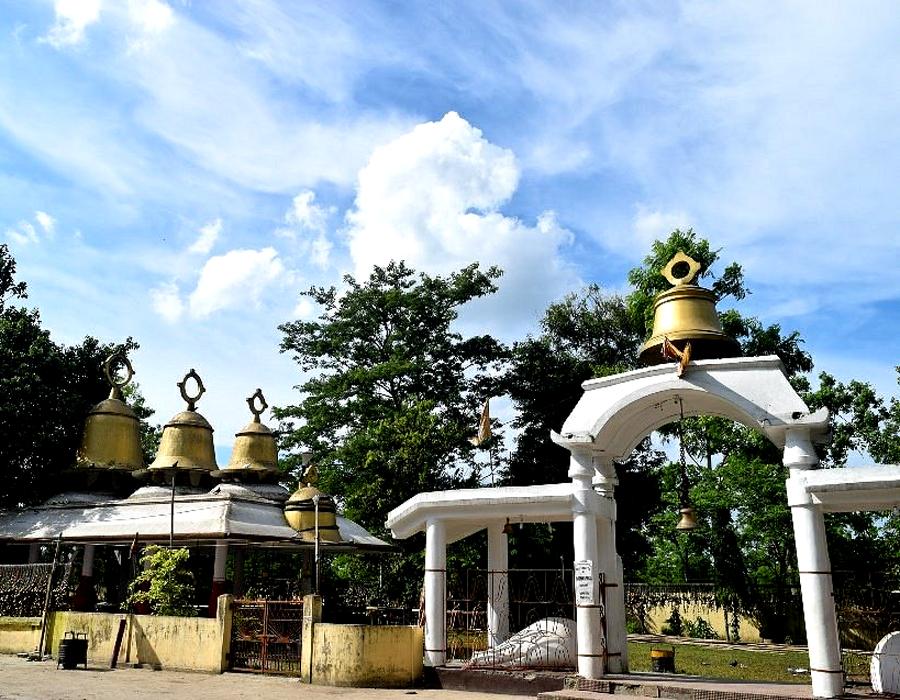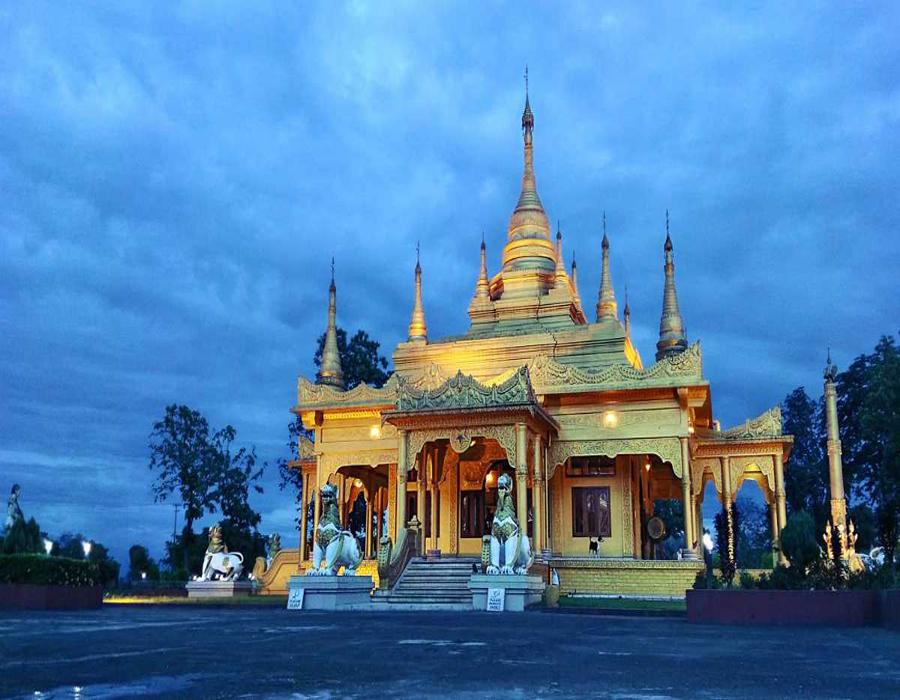Nestled in Bordubi,
near Tinsukia town, Tilinga Mandir is an
extraordinary Hindu shrine where faith, tradition, and community converge
beneath an ancient Peepal tree. Known simply as the Bell Temple,
devotees believe that tying a bell here symbolizes prayers answered by Lord
Shiva—and each bell represents a fulfilled wish.
For visitors
from Duliajan, it’s an inspiring stop that combines local
spirituality with incredible visual appeal.
Origins and Spiritual Significance
Tilinga Mandir is
firmly rooted in a legend from 1965, when tea garden workers
discovered a Shiva Linga emerging from the soil near a Peepal tree.
A temple was erected around it, and since then, the custom grew: devotees made
vows to return with a bell if their prayers were granted. Over time, thousands
of bells of bronze, brass, copper, and aluminum in various
sizes appeared—some weighing up to 50 kg.
The Peepal tree,
long associated in Hindu mythology with divine power and wish‑fulfillment,
became the symbolic focal point. As the number of bells multiplied, iron bars
were installed to support them, preserving the tree’s health while honoring
devotees’ offerings .
Distance & Route from Hotel Aatreyee, Duliajan
If you're staying
at Hotel Aatreyee in Duliajan, Tilinga Mandir is a serene spiritual
detour you can make in a few hours:
·
Distance: ~60 km via Tinsukia
·
Travel Time: About 1 hour 20 minutes by
road
·
Route:
Duliajan → Naharkatia → Tinsukia → Bordubi → Tilinga Mandir
The serene drive
passes through tea gardens and rural landscapes. Tinsukia offers reliable
connectivity, and from there it’s a short local ride. The temple is well
signposted once you reach Bordubi.
Temple Traditions & Visitor Experience
Rituals & Beliefs
Visitors tie bells
to express gratitude toward Lord Shiva. Many also offer pigeons or trishuls
(Shiva’s tridents) after their prayers are answered. Mondays and Mahashivratri see
peak attendance as they hold special spiritual significance.
Atmosphere & Visual Appeal
Walking within the
premises, you’ll see a stunning visual of bells glinting on iron bars and on a
large Peepal tree—creating a cascading metallic tapestry. The gentle clinking
in the breeze can evoke a sense of reverence and wonder.
Temple Setting
Set amidst tea
plantations and quiet greenery, the temple offers a peaceful ambience. Poojas
are performed daily from 6 AM to 8 PM, with special ceremonies on
Shiva-related observances.
Things to Do
·
Tie a Bell: Select a small bell or join locals
in gifting metal offerings.
·
Photograph the Scene: The mass of
hanging bells creates excellent visual compositions.
·
Observe Rituals: Witness devotees praying at the
courtyard and under the Peepal tree.
·
Explore the Surroundings: Tea gardens and
local shops surrounding the temple area add charm to the visit.
Travel Tips
·
Best Time to Visit: February–May and
October–November for pleasant weather and festival days.
·
Temple Hours: Daily from 6 AM to 8 PM;
Thursdays and Mondays are especially active .
·
Devotee Etiquette: Modest clothing is recommended;
avoid disrespect to bells or the tree.
·
Transport: Easily accessible by car or bus
from Tinsukia; most visitors hire local transport for the final stretch.
Suggested Visit Itinerary (From Hotel Aatreyee)
|
Time |
Activity |
|
8:30 AM |
Depart Duliajan |
|
9:50 AM |
Arrive at Tilinga Mandir |
|
10:00 AM |
Walk temple grounds, tie bell, participate in prayers |
|
10:45 AM |
Explore nearby shops or tea gardens |
|
11:30 AM |
Optional visit to Dehing Patkai Wildlife Sanctuary or nearby sites |
|
1:00 PM |
Lunch in Tinsukia or Bordubi |
|
2:00 PM |
Return journey |



